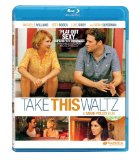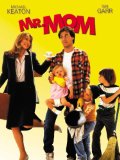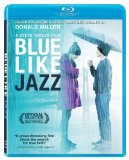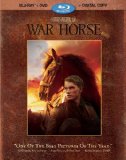
 There were many dynamics at play with the 2008 market and housing crash. Talk of greedy bankers, incompetent credit ratings agencies, spineless politicians and policy makers have been and continue to be the focus as we get some (small) distance between the events that resulted in a near economic collapse. Missing in all of this is the consumer side of the equation. Main Street. The innocents. You and me. Except we’re not so innocent. Money was (is?) cheap and our desires for more and more rarely subsides. Taken to the extreme this vicious cycle of cheap money and an endless appetite for more results in a couple like David and Jackie Siegel. Timing is everything. Lauren Greenfield happened to already be filming the Siegels building the largest single family home in the United States when everything came crashing down. The result is The Queen of Versailles, a documentary capturing the story of the little guy through the eyes of the biggest of the little guys.
There were many dynamics at play with the 2008 market and housing crash. Talk of greedy bankers, incompetent credit ratings agencies, spineless politicians and policy makers have been and continue to be the focus as we get some (small) distance between the events that resulted in a near economic collapse. Missing in all of this is the consumer side of the equation. Main Street. The innocents. You and me. Except we’re not so innocent. Money was (is?) cheap and our desires for more and more rarely subsides. Taken to the extreme this vicious cycle of cheap money and an endless appetite for more results in a couple like David and Jackie Siegel. Timing is everything. Lauren Greenfield happened to already be filming the Siegels building the largest single family home in the United States when everything came crashing down. The result is The Queen of Versailles, a documentary capturing the story of the little guy through the eyes of the biggest of the little guys.
David and Jackie Siegel came from modest families. David built his timeshare company, Westgate Resorts, from the ground up. He employs thousands of people in order to sell mostly middle class families on renting a dream they can’t afford to own. Westgate builds incredible resorts on money they borrow from banks, then they sell mortgages on the rooms for a week per year to families who could never afford such luxurious vacation pads otherwise. Those families pay a monthly amount over many years to pay for a vacation stay once a year for the rest of their life. One room in a resort essentially provides 52 mortgages. Westgate then turns around, bundles these mortgages and sells them as investments. At one point, David Siegel’s son is on screen pumping up his sales staff. He tells them that they are saving lives. He equates timeshare sales people to doctors, nurses, firemen, etc. He does this with a straight face as he rattles off some study which shows people who take a week vacation once a year live longer than those who don’t. Even houses made of cards need someone to care for them. In this case care comes in the form of twisted logic.
Jackie got a computer engineering degree and went to work for IBM out of school. Her achievement was short lived as she decided there was little glamour in writing code so she decided to marry money instead. After being in an abusive marriage, Jackie found David via a beauty pageant. The two have six children plus one adopted niece on Jackie’s side of the family. The former beauty queen and her husband decide they need more room with such a big family so they go about building a 90,000 monstrosity of a home inspired by Versailles and the finest buildings Vegas has to offer. In the process of building their dream house the economy comes to a screeching halt.
What starts off as a tale of decadence turns into the story of just what the housing market crash looked like, from the top of the food chain to the bottom, all through the eyes of a difficult to like billionaire couple. The lack of money flowing freely means David Siegel is suddenly underwater on his prized property in Vegas. He personally backs every loan the company takes out which means he is liable for hundreds of millions of dollars. And since he’s saved nothing, he and his family’s life of continued luxury is at severe risk. The trickle down impact of this is seen in one of the family’s nannies and their driver. Both depend on the Siegels for paychecks and as the banks lay the hammer down on the timeshare mogul, the ability for David to pay a household staff dwindles. Layoffs at Westgate come fast and furious, with thousands losing their jobs. No one is safe. Yet through it all, Jackie is shown to be both aware yet oblivious all at once. On the one hand she is quick to recognize a childhood friend’s desperate need for money to catch up on mortgage payments and writes a check on the spot. On the other hand, she continues to spend money like there is no tomorrow. She’s shown in one moment to be completely cognizant of her drastically downsized staff’s struggles and in the next she humiliates them with some offhand comment like, “Well, at least you won’t have to clean this place”, referring to her version of Versailles going up for sale.
As the film progresses, David’s patience grows shorter. He spends every waking hour puzzling his way out of massive debt. His dream house is on the market for a mere $90M. His company is shrinking. The banks want him to liquidate everything but the shirt on his back. And to top it all off, his family is driving him mad with their lack of awareness of what is happening to them. Towards the end of the film David’s nearly non-existent patience is put to the test by his family and he loses it. It’s an amazingly intimate moment which shows just how fragile the mortar is which holds the Siegel household together.
The Queen of Versailles profiles a hard to empathize with couple who are caught in the tangled web of a market crash. What could have been a condescending look at how the mighty fall, director Lauren Greenfield finds the deeper story by also exploring the stories of those around the Siegel family. No one will shed a tear for Jackie and David Siegel, but most will admit to an uneasy feeling that the beast they attempted to ride is the same one that many of us tried to hang onto, if only to a lesser degree.
[xrr rating=4/5 label=” “]
[netflix:70229267:img:false:end]
This post is part of my Way late reviews. Read more reviews here.
[youtube width=”640″ height=”360″]http://www.youtube.com/watch?v=CYOnT3Gqe9U[/youtube]


























































